Texas is home to a wide variety of cedar trees, some of which have been used for centuries as a source of construction material and as a natural deterrent against pests. Cedar trees are an evergreen species that produce foliage all year round and thrive in the Lone Star State’s temperate climate. This article will provide an overview of the different types of cedar trees found in Texas, along with the characteristics and uses associated with each species.
Get to know the types of Cedar trees in Texas.
Contents
Cedar is the general name for cedar wood, which is used to describe several different but related tree species that grow in different parts of the world. Cedars are generally upright trees with leaves that are evergreen in nature. These trees or types of trees have a similar form and use, but their growing conditions vary and so do the environments in which they are found. Cedar (Cedrus), also called “true” cedar, is a coniferous genus and species, and so for a type of tree to be called a cedar tree, it must be coniferous. (conifers are a group of trees and shrubs that mostly have needle-shaped leaves, and produce seeds. Their timber is mostly of high quality.)
In this article, we will be sticking strictly to the types of Cedar that you will likely find within the state of Texas. Remember that Texas is a paradise for nature, a place that is uniquely situated and which is blessed with a climate that promotes the growth and proliferation of all types of life forms. when it comes to coniferous trees, Cedar, in particular, Texas does not disappoint.
Types Of Cedar Trees In Texas
Oakbark Cedar
Oakbark cedar (Juniperus deppeana) which is also known as the alligator juniper, is most well known for its defining feature which is the thick barks of the older trees that sometimes resemble alligator scales. The bark is very thick, and offers guaranteed protection from inclement weather, as well as giving protection from insect pests that can hinder the growth of the tree.
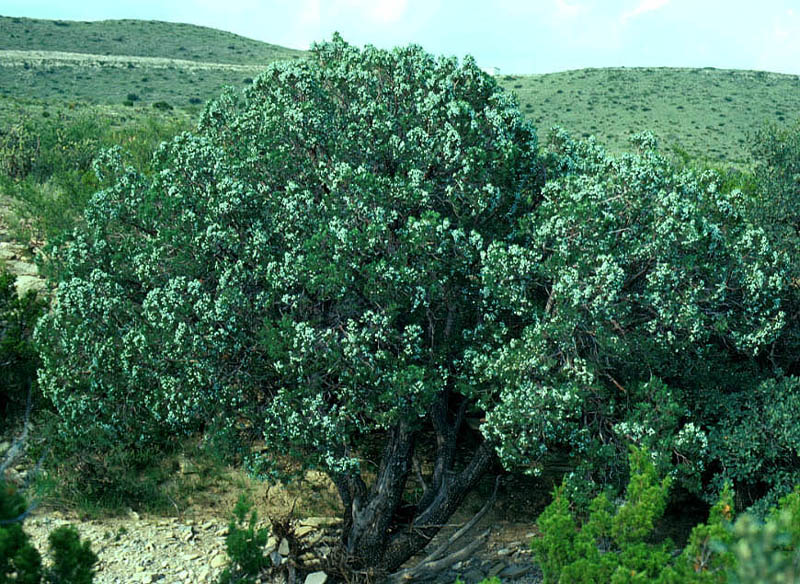
The oakbark cedar has dark blue-green leaves that are shaped and pointed like needles. The tree produces berry-shaped cones. The cedar can grow in just about any soil type, can tolerate high temperatures, and can grow well with very little water. The oakbark cedar can normally be found in west Texas where it is dry, and where desert temperatures can range from extremely hot to severely cold.
Mountain Red Cedar
The mountain red cedar (Juniperus scopulorum) which is also known as Rocky Mountain juniper is a type of cedar tree that grows naturally in some of the lower altitudes of the Texas panhandle and also in the higher mountain parts of western Texas.
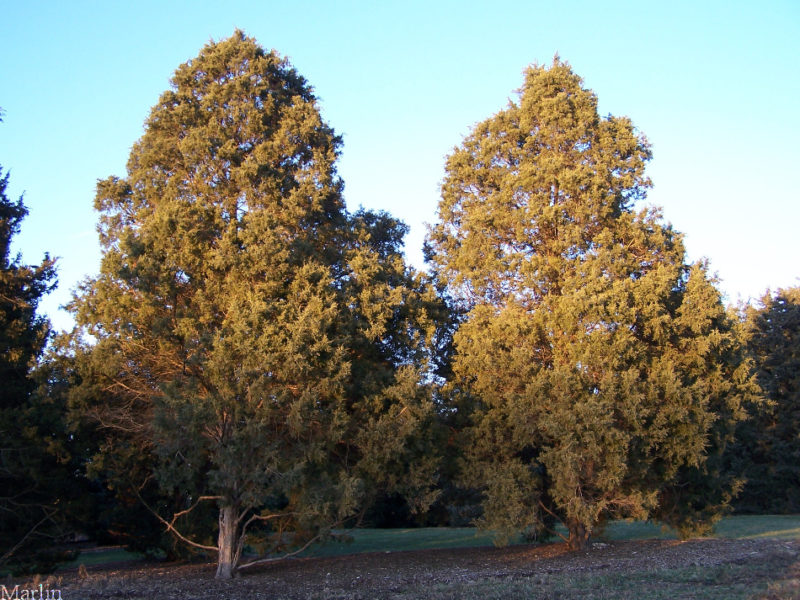
The mountain red cedar is an aggressive kind of tree and can grow as high as 50 feet and also as wide as 30 feet. The cedar is sometimes planted by farmers on farms to make windbreakers for their grazing fields and this type of tree has also been tremendously useful in landscaping, as landscapers usually use it to make privacy fencing for their clients.
Drooping Cedar
The native drooping cedar (Juniperus flaccid) which is also called the weeping juniper or drooping juniper is most recognizable because of its branches and leaves that bend and droop downward, in a similar fashion to the weeping willow. This tree has big but narrow and needle-shaped leaves, and a characteristically upright growth pattern. Although native to Texas, the drooping cedar only naturally grows in the upper Chisos Mountains which is in the area of the Big Bend National Park.
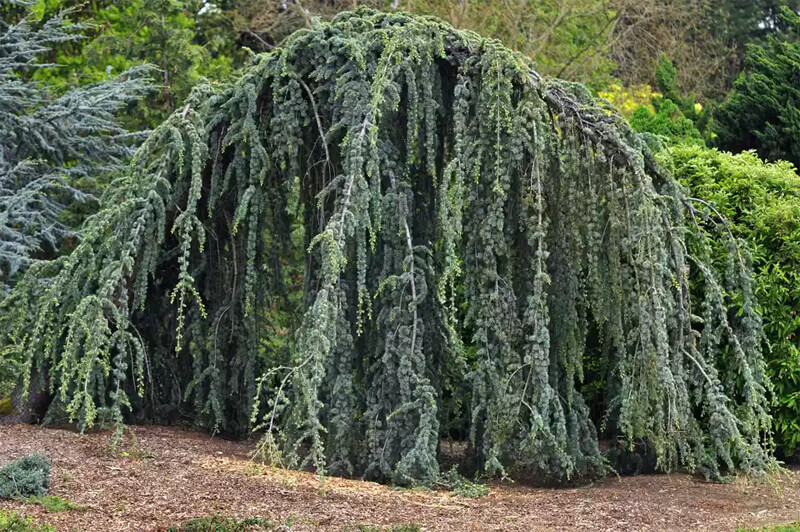
The drooping cedar can grow to be very tall, and it can also be very wide as well. The tree has been known to reach almost 55 feet wide and there are plenty of specimens in excess of 55 feet tall. Although this tree is highly adaptable to temperature fluctuations and is highly resistant to prolonged drought, the drooping cedar requires continually acidic soil. That is why it is only naturally found in the upper parts of the Chisos Mountains where the soil is naturally acidic, and where the soil is naturally good for it. Other parts of Texas do not have this type of soil, so the tree is not found naturally in Texas.
Red Cedar
The Red Cedar (Juniperus virginiana) which is known as red cedar, eastern red cedar, Virginian juniper, also known as eastern juniper, red juniper, pencil cedar, and also aromatic cedar, is a species of juniper that is native to eastern North America. This tree has a natural habitat that stretches from southeastern Canada and goes into the Gulf of Mexico as well as east of the Great Plains.
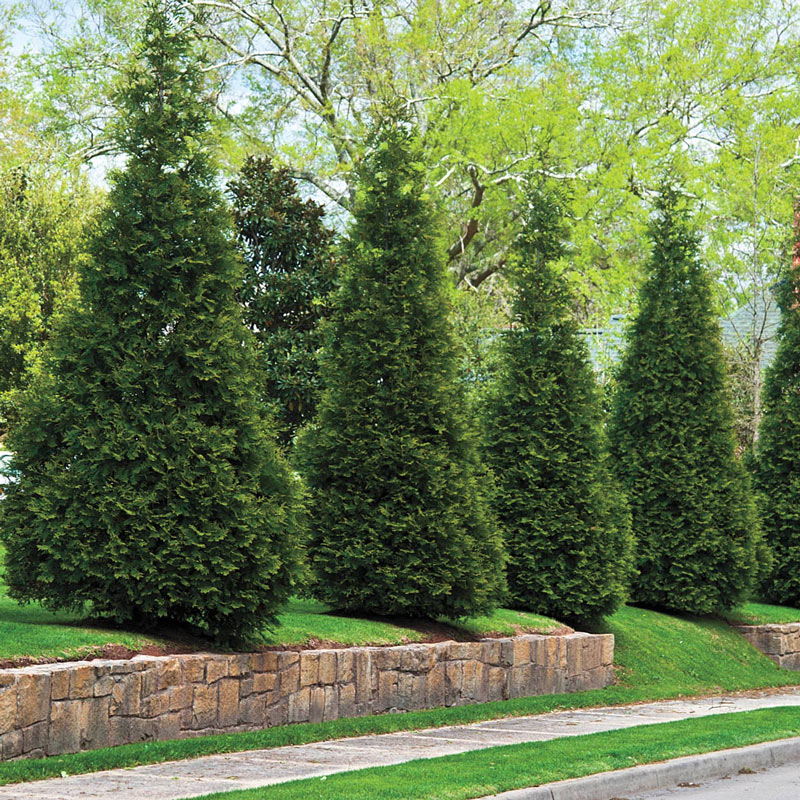
This tree can also be found in many parts of Texas, in the natural environment, as well as on private property where it is planted to beautify the landscape, to provide shade, or sometimes to act as a windbreaker. The tree is known because it has aromatic qualities. The tree’s bark and leaves give off a pleasant scent, particularly when squeezed or burnt over a fire. It is said that native American tribes cherish these trees for some healing qualities for which it is known. It is said that the bark and leaves of this tree are useful for curing some ailments.
Rock Cedar (Ashe Juniper)
Rock cedar (Juniperus ashei) which is also called the mountain cedar, post cedar, break cedar, Texas cedar, ashe juniper, Mexican juniper, and sometimes even sabino is a tree that is well known for the allergy-inducing pollen that it produces. Years of evolutionary development have given this tree an edge over other trees in the forest- it can absorb groundwater invasively to the detriment of other native plants and trees! Yes, this tree is so greedy that it literally gobbles up as much of the water as it possibly can, thus basically starving other trees of this vital resource.
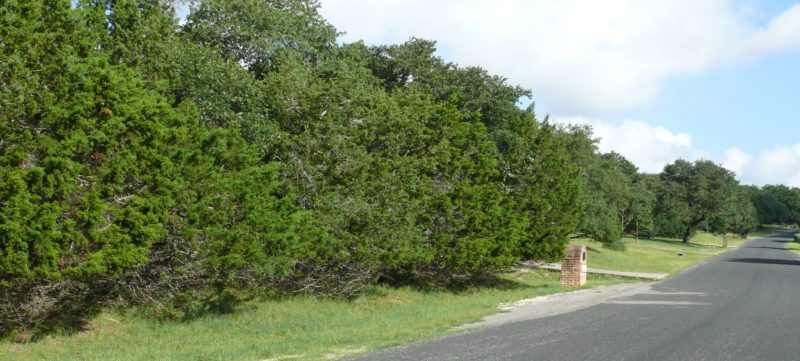
The Rock Cedar is literally the apex tree in the forest, and other trees must maintain a distance if they are going to survive. This attribute has not gone unnoticed- man in his meddlesome nature has been making attempts to dabble into or even control the natural world: They have done in the form of Organizations like People Against Cedars, who have petitioned the state of Texas to prevent strong species of cedar from monopolizing the environment. Rock cedars, as we have mentioned in the introduction are evergreens and can reach heights of more than 38 feet and widths of up to 30 feet.
Cedar Fever
Cedar fever, also known as “cedar allergies” or “mountain cedar allergies,” is a seasonal allergy suffered by many Texans during the winter months. The pollen that causes cedar fever is produced by several species of juniper trees found in Central and South Texas. During the winter months, these trees release large amounts of pollen into the air, which can trigger severe allergic reactions in those who are sensitive to it. Symptoms of cedar fever include nasal congestion, sneezing, watery eyes, and headaches. In some cases, more severe symptoms such as asthma attacks and difficulty breathing can occur.
Cedar fever is an allergic reaction to pollen from the Ashe juniper tree, also known as the cedar tree, which is native to Texas. This type of allergy typically occurs from late December through March when the trees are pollinating. The pollen from the cedar tree is released in large quantities and can travel up to 100 miles. Symptoms of Cedar fever include sneezing, congestion, runny nose, itchy eyes, and coughing. People who have asthma or other respiratory conditions may experience more severe symptoms such as difficulty breathing.
Treatment for Cedar fever includes avoiding outdoor activities during times of peak pollen count and taking antihistamines or nasal sprays to reduce symptoms. It is also important to keep windows closed and use air conditioning filters that can trap airborne particles such as pollen. Additionally, showering after being outside and washing clothing can help reduce exposure to allergens. Taking these steps can help reduce the severity of Cedar fever symptoms and make living with this condition more manageable.
Cedar Allergies
Cedar allergy is a condition that affects thousands of people in the Lone Star State. People with cedar allergies experience sneezing, coughing, wheezing, and watery eyes when exposed to pollen from cedar trees. This can be a particularly common problem for residents of Texas, as these evergreen trees are some of the most popular species grown by homeowners across the state.
People who suffer from cedar allergies should take steps to protect themselves during peak allergy season, which typically runs from late March through early May. During this time, experts recommend keeping windows closed and avoiding areas where cedars are abundant. Even though it may not be possible to completely avoid exposure to cedar pollen, wearing protective gear such as a face mask or glasses can help reduce symptoms and lessen their severity.
Final Word
Texas is home to many different types of cedar trees. All of them are resilient and thrive in a variety of conditions. They make wonderful additions to any landscape, providing both beauty and structure. Additionally, their fragrant aroma provides a pleasant atmosphere for outdoor activities. Homeowners should consider these trees when planning out their yards or gardens as they can offer an attractive feature to the area while also providing many benefits including shade from the hot Texas sun, protection from wind, and natural pest control.
Cedar trees are a well-loved and well-known tree species. While there is often confusion between common and botanical names among the types, there is no denying that these trees are both beautiful and useful. Cedars have helped communities evolve, travel, and build cities. The health, vitality, and opportunities that surround these conifer trees continue to this day.


So basically there are no true cedar trees in Texas then.